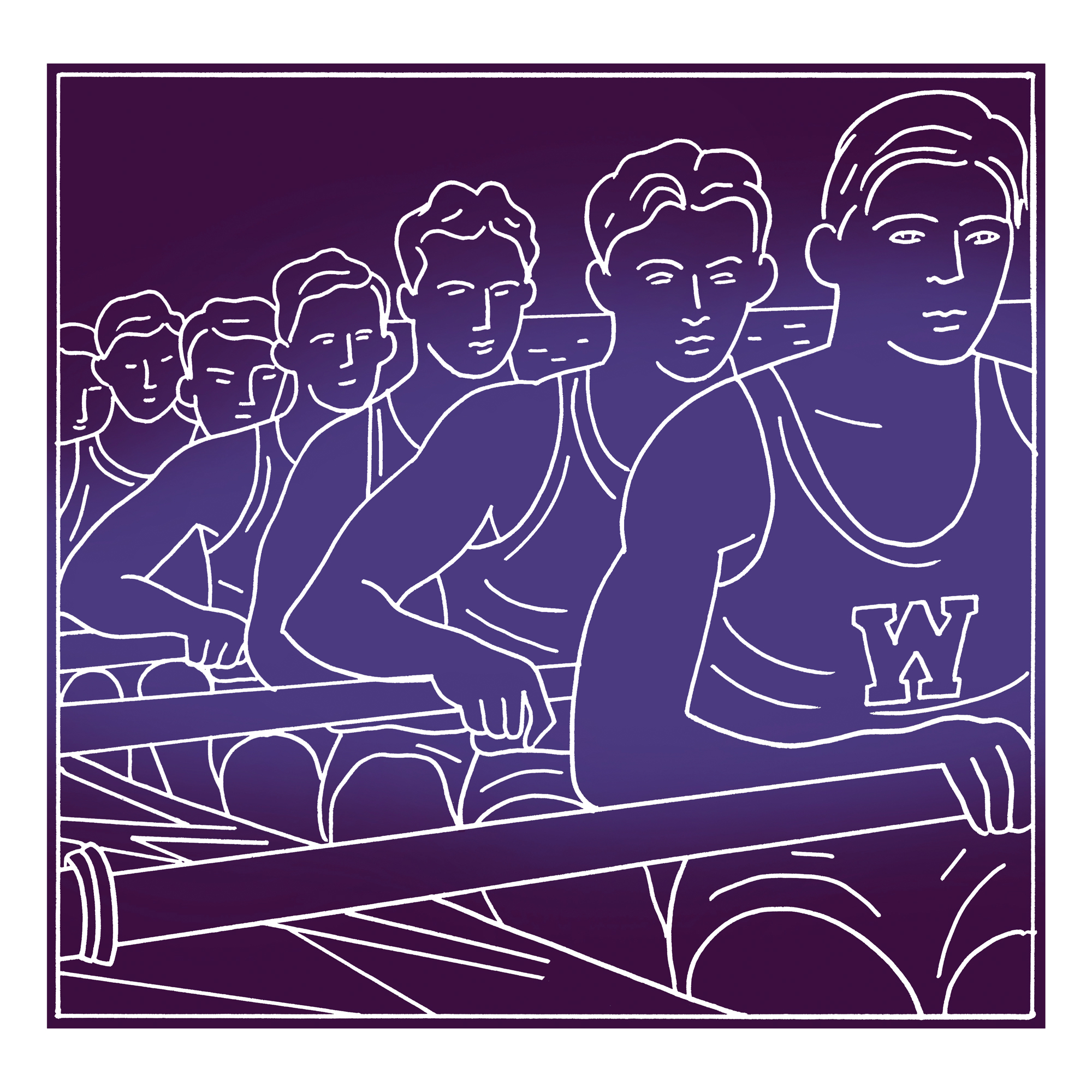
‘Boys in the Boat’: a story with depth ‘Boys in the Boat’: a story with depth ‘Boys in the Boat’: a story with depth
Author Daniel James Brown shares memories of writing the best-selling book.
By Daniel James Brown | Illustration by Anthony Russo | December 2023
Writing a book is a bit like taking a voyage of exploration. There’s always a sense of stepping off the familiar ground of your everyday life and venturing forth into territory incognito, not sure what you’ll encounter along the way. It’s exhilarating but also fraught with anxiety.
That’s certainly how I felt 14 years ago as I began to work on “The Boys in the Boat.” Every few days, I slogged across the UW campus in the rain, made my way into Suzzallo Library, sat down in front of a somewhat decrepit microfilm reader, and began to study Seattle newspapers from the mid-1930s. I was worried. Would I find enough material about the 1936 Husky crew to warrant a book? Would this story peter out, as often they do on close examination? What if the boys in the boat turned out to be a bunch of jerks? And would readers really care about a story built around rowing, anyway?
But my anxiety quickly gave way to exhilaration. There’s a line in a Keats poem that comes to mind: “Then felt I like some watcher of the skies/When a new planet swims into his ken.” Studying those newspapers, I quickly found myself looking upon a world I had little prior knowledge of—the world of Seattle and the University of Washington in the 1930s—and I was utterly entranced. Much more than a book about a crew, I realized, this was going to be a book about a time and a place and some extraordinary people who inhabited it. As I read about George Pocock and the beautiful rowing shells he built, I discovered a culture of craftsmanship, a history of working with wood, an obsession with the beauty of wooden boats on water that helped define not just Seattle but the entire Pacific Northwest. As I read in detail about the history of rowing at the University of Washington, I discovered a tradition of strenuous outdoor competition, but competition that was balanced by awareness of cooperation and teamwork that crew demands. As I read about the community effort to raise funds to send the boys to Berlin for the Olympics, I discovered a pattern of civic pride and determination that bound the citizenry together in common cause through some very challenging times.
My excitement only grew in the months that followed as I met with the family members of the boys who sat in that shell and I learned more about who they were, what they believed in, and how they conducted their lives. And as I pulled together the various strands of my research and began to write, I slowly came to understand that their story is our story in a deep and profound sense. It reminds us of who we are and where we have come from, as a university community, as citizens of Seattle and its surrounding communities, as Pacific Northwesterners.
As I sat in front of that microfilm reader 14 years ago, I could never have imagined that one day the story I was trying to capture would entertain and inspire millions of readers. Nor could I have imagined that millions more would see it unfold in movie theaters around the world. But now that we are on the cusp of seeing the movie appear, I remain profoundly grateful to the nine extraordinary young men who learned to pull together so beautifully and powerfully and in doing so showed us how to be our own best selves.